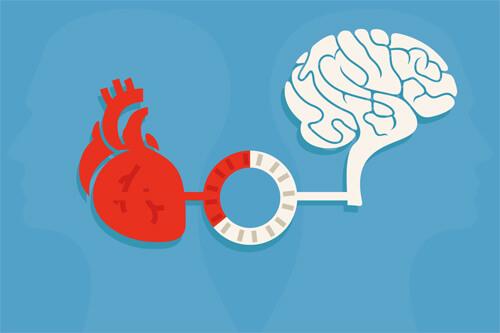

X-axis indicates the band selected for phase extraction and y-axis indicates the band selected for amplitude extraction.

For each pair of frequency bands, the color codes for the phase-amplitude modulation index. The 3 rd and 4 th columns depict the electrodes representing the right medial and right lateral hemisphere, respectively. Column 1 represents the lateral left brain hemisphere, column 2 shows the left medial electrodes. Phase-amplitude cross-frequency co-modulogram computed during the interictal interval (II), ceased left hemisphere activity (LS), suppression of bilateral activity (BS) and post cardiac arrest (post-CA). The white background indicates bars belonging to the left y-axis and the gray background indicates bars belonging to the right y-axis. (C) Mean absolute (left) and relative (right) power of sequential frequency bands taken in 30-s epochs centered over the midpoints of EEG activity between seizure activity and left cerebral suppression (II window: 385–415 s), suppression in left and bilateral hemispheres (LS window: 510–540 s), between bilateral suppression and cardiac arrest (BS window: 690–720 s) and finally, cardiac arrest and the end of the recording (post-CA window: 810–840 s). Absolute and relative gamma band power is more dominant in the period between BS and CA, while low frequency activity (< 25 Hz) declines across the recorded time. The notch filter applied at 60 Hz and its super harmonics are visible as solid horizontal blue lines. The z-axis of the spectrograms utilizes a log scale heat map with blue indicating low power and yellow indicating high power. (B) Spectrograms of absolute (left) and relative (right) power of global EEG (16 channels) over the 900-s recording. After CA, there is a global decline in EEG amplitude. Between BS and CA, there is an acute decline in EEG amplitude captured by multiple leads (FP1, F7, P3, FP2, T4).

(A) 240 s (sec) after termination of seizure activity (time window: 170–230 s), neuronal activity ceases on the left side (at 470 s), before both hemispheric suppression (694 s) and cardiac arrest occurs (at 720 s). Left panel indicates left brain hemisphere, right panel indicates right brain hemisphere. (A) Global EEG output from the 10–20 system with concurrent EKG signal over a 900 s period encompassing a seizure (S), suppression of left cerebral hemisphere activity (LS), suppression of bilateral cerebral hemisphere activity (BS), and cardiac arrest (CA). Albeit the influence of neuronal injury and swelling, our data provide the first evidence from the dying human brain in a non-experimental, real-life acute care clinical setting and advocate that the human brain may possess the capability to generate coordinated activity during the near-death period.Ĭoherence coupling end-of-life life recall near-death.Ĭopyright © 2022 Vicente, Rizzuto, Sarica, Yamamoto, Sadr, Khajuria, Fatehi, Moien-Afshari, Haw, Llinas, Lozano, Neimat and Zemmar. The strongest coupling is observed for narrow- and broad-band gamma activity by the alpha waves during left-sided suppression and after cardiac arrest. Cross-frequency coupling revealed modulation of left-hemispheric gamma activity by alpha and theta rhythms across all windows, even after cessation of cerebral blood flow. After cardiac arrest, delta, beta, alpha and gamma power were decreased but a higher percentage of relative gamma power was observed when compared to the interictal interval. An increase of absolute power in gamma activity in the narrow and broad bands and a decrease in theta power is seen after suppression of bilateral hemispheric responses. Here, we present continuous electroencephalography (EEG) recording from a dying human brain, obtained from an 87-year-old patient undergoing cardiac arrest after traumatic subdural hematoma. No study has yet investigated this matter in humans. Although a hypoactive state of brain activity has been assumed, experimental animal studies have shown increased activity after cardiac arrest, particularly in the gamma-band, resulting from hypercapnia prior to and cessation of cerebral blood flow after cardiac arrest. The neurophysiological footprint of brain activity after cardiac arrest and during near-death experience (NDE) is not well understood.


 0 kommentar(er)
0 kommentar(er)
